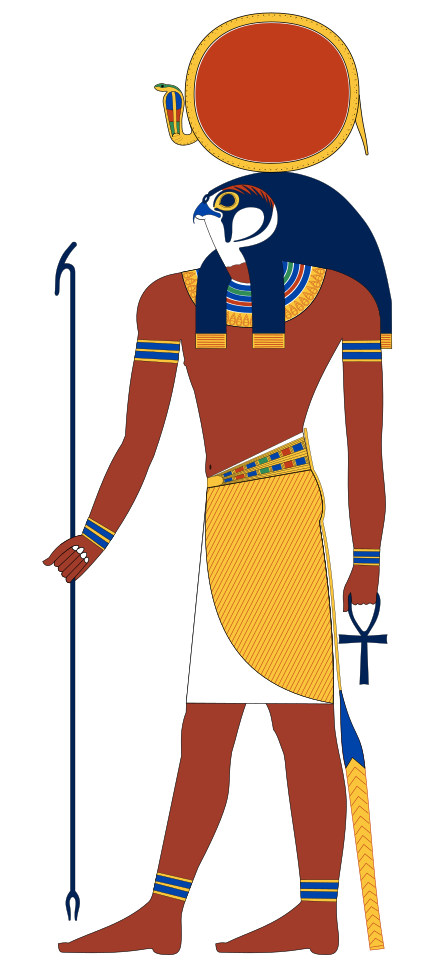Ra (/rɑː/;[2] Ancient Egyptian: rꜥ or rˤ; also transliterated rˤw /ˈɾiːʕuw/; cuneiform: 𒊑𒀀 ri-a or 𒊑𒅀ri-ia)[3] or Re (/reɪ/; Coptic: ⲣⲏ, romanized: Rē) was the ancient Egyptian deity of the sun. By the Fifth Dynasty, in the 25th and 24th centuries BC, he had become one of the most important gods in ancient Egyptian religion, identified primarily with the noon-day sun. Ra was believed to rule in all parts of the created world: the sky, the Earth, and the underworld.[4] He was the god of the sun, order, kings and the sky.
Ra was portrayed as a falcon and shared characteristics with the sky-god Horus. At times the two deities were merged as Ra-Horakhty, “Ra, who is Horus of the Two Horizons“. In the New Kingdom, when the god Amun rose to prominence he was fused with Ra as Amun-Ra.
The cult of the Mnevis bull, an embodiment of Ra, had its center in Heliopolis and there was a formal burial ground for the sacrificed bulls north of the city.
All forms of life were believed to have been created by Ra. In some accounts, humans were created from Ra’s tears and sweat, hence the Egyptians call themselves the “Cattle of Ra”. In the myth of the Celestial Cow, it is recounted how mankind plotted against Ra and how he sent his eye as the goddess Sekhmet to punish them.
https://en.wikipedia.org/wiki/Ra






